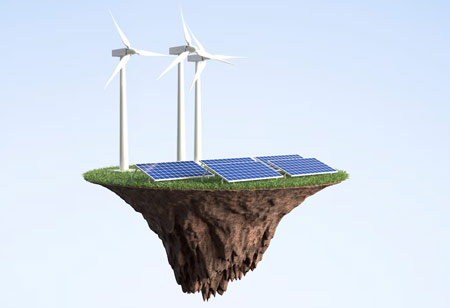Thank you for Subscribing to Electrical Business Review Weekly Brief
I agree We use cookies on this website to enhance your user experience. By clicking any link on this page you are giving your consent for us to set cookies. More info
The Impact of Power Converters on Renewable Energy Growth
Power converter innovations enhance industrial automation, telecommunications, and electronics by promoting sustainable energy, improving efficiency, cutting costs, and enabling new capabilities.

By
Electrical Business Review | Wednesday, September 17, 2025
Stay ahead of the industry with exclusive feature stories on the top companies, expert insights and the latest news delivered straight to your inbox. Subscribe today.
Fremont, CA: Power converters are crucial for controlling and converting electrical energy, promoting sustainability and energy efficiency. They enable the integration of renewable energy sources into the grid, addressing the growing demand for clean energy. Modern power converters are evolving to support a cleaner environment.
Wide-bandgap (WBG) semiconductor materials, like silicon carbide and gallium nitride, revolutionize power converters with higher efficiency, faster switching speeds, and enhanced thermal conductivity. WBG materials allow the development of compact or miniature high-power-density power converters for renewable energy systems, electric vehicles, and industrial automation. Improving conversion efficiency contributes to reducing energy loss and improving energy system performance.
Digital control techniques transform power converter designs to provide better accuracy and response. Since power converter designs are primarily analog, their precision and adaptability sometimes need to be improved. With digital systems, parameters such as voltage and frequency can be changed dynamically to match changing power inputs or outputs. More advanced algorithms like model predictive control and artificial intelligence are used to achieve higher efficiency and reliability in real-time power conversion.
Solar and wind are gaining importance as renewable energy sources in energy storage systems. Power converters play a crucial role in controlling the flow of electricity from the grid to the storage systems. Bi-directional power converters have been designed for efficient storage and retrieval, thus efficiently incorporating renewable energy into the grid. This also enables the saving of excess energy, allowing for minimal fossil fuel usage and enhancing the stability of the energy supply.
The application of inverters in renewable energy is rising. These latest technologies convert DC power from solar panels or energy storage systems into AC and feed it into the grid. These latest technologies improve inverter efficiency, resulting in higher conversion rates and lower losses. Most innovations nowadays use grid synchronization to improve the integration of renewable energy into the grid, minimizing the risks of any form of disturbance.
The electric vehicle industry needs power converters, and their acceptability is increasing. Innovations in onboard chargers, fast-charging technology, and motor drives are improving performance and convenience. Power converters optimize energy use and battery life while integrating EVs into the bigger grid scheme. V2G technology enables charging and supplying energy back to the grid when needed, increasing overall efficiency with EVs.
The evolution of power converter technology makes it possible to utilize energy more efficiently and spurs and accelerates progress in industrial automation, telecommunications, and consumer electronics. Innovative power converter technologies will be crucial in driving the low-carbon future with sustainable energy solutions worldwide. Improving efficiency, cutting costs, and unlocking new capabilities are shaping the future of energy systems and society.








